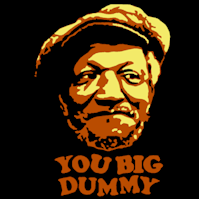-
Posts
165 -
Joined
-
Last visited
Recent Profile Visitors
2,739 profile views
Fred Sanford's Achievements

Ensign (4/13)
121
Reputation
-
I'm not really a fan of the smoke dynamic. They need to image search real DD's laying real smoke screens- in general, they don't lay them for themselves, but to screen others, and it doesn't form a fart cloud surrounding the ship like its a Romulan cloaking device, but would stream out the funnels or smoke generators at the stern to form a 'wall' of smoke (local wind notwithstanding) behind the DD.
-
All you gamers look alike to me. 🙂
-
The V-25 was a typical German DD of WW 1. Actually, the Germans did call them torpedo boats, emphasized the torpedo armament over the guns in their designs. British destroyers tended to be larger and equipped with more guns but fewer torpedoes. Late war V&W class DD's were excellent all-around designs and many survived to serve in WW 2.
-
Mines on the other hand...both sides expended a lot of effort laying and sweeping mines, and they took a steady toll of ships and subs, as well as being effective "area denial" weapons. While fleet engagements were rare, there were regular clashes between light forces deployed to lay and clear mines.
-
During WW 1, the record for using submarines as scouts was generally poor. A submarine sits low in the water and so has a short spotting range. Once driven underwater by the inevitable escorts accompanying a battle fleet, the sub is essentially blind and immobile. There were numerous technical limitations to radios of the day, and navigation was still more art than science, so your own position, let alone any spotted enemy, may be off by several tens of miles or more, unless so close to shore that an established landmark can be referenced. As weapons to attack enemy fleet units, there were some successes on all sides, especially early in the war before anybody really understood the threat and limitations very well. Subs were most useful in an anti-commerce raiding role, so they may be fairly abstracted in a dreadnought-focused game (RTW does a reasonable job of this IMO). Radio communications in general were problematic as the equipment was fragile- it wasn't unusual for the vacuum tubes inside the radio to shatter upon firing of the ship's own guns, so flashing lights and flags were still used extensively as in Nelson's time. Command and control was really a problem as the fleet sizes had grown, and with the increased weapon ranges and more dispersed deployments it was difficult-to-impossible for a commander to know what his own fleet was up to, let alone the enemy's. Scouting aircraft were really still in an experimental stage. The Germans deployed zeppelins as scouts, but they really didn't accomplish much during any of their major sorties. The British had one seaplane carrier, the Engadine, at Jutland. It managed to launch a scout plane, but due to radio difficulties none of its reports made it up the chain of command, and the plane was forced down due to mechanical failure after less than half an hour aloft. So in game terms I think aircraft may be generally ignored, or handled on a fairly abstract basis- say the occasional (and vague) spotting report from shore-based scouts.
-
Would a player be able to fight battles the size of Jutland? Is there a chain of command at work in the game including admirals commanding squadrons and divisions?
-

Who's Your Favorite General?
Fred Sanford replied to Albert Sidney Johnston's topic in General Discussions
Not a general, but a Colonel: Colonel Angus -

Who's Your Favorite General?
Fred Sanford replied to Albert Sidney Johnston's topic in General Discussions
D.H. Hill, right? What do I win? -
I've got my eye on Grand Tactician's Civil War. Sounds like it will be just that kind of mix.
-
Very interesting. Although I'm not sure if "battle value" is really a thing, or if it is simply a matter of numbers. i.e. I wonder if a 500 man 3 star acts the same as a 500 man zero star so far as scaling.
-
Ultimate General: Blitzkrieg! Zoom the map out so that instead of individual farm buildings, you have towns and cities. Units become divisions (along with some smaller artillery and specialty units) and the player controls up to Army Group level. Operational/Strategic level. Campaigns, not battles. Real chain of command- i.e. give orders to Corps or Army HQs (or Fleets/Task Forces & Air Forces) to cut down on micromanagement. Includes Air and Naval. Be able to build stuff like fortifications, airfields and the like. Scenarios include Fall Gelb, Campaign for Guadalcanal, Operation Typhoon, Operation Overlord, Mediterranean Campaign. Thread said 'no matter how insane'.
-

Android game war of colony using UGCW footage
Fred Sanford replied to FearFighter's topic in General Discussions
I ate a big salad yesterday and that's what I got. -
Sounds like people might want to save the original Data folder in a different location (or copy/rename) so they can go back to the original if desired.







